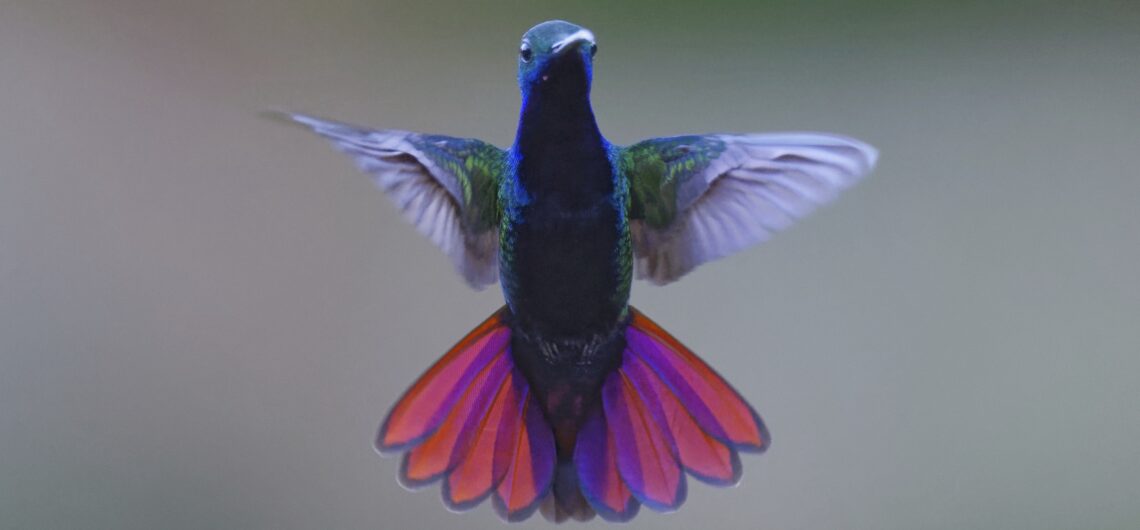Black-throated Mango
Anthracothorax nigricollis
The Black-throated Mango is an attractive, distinctive hummingbird primarily found in South America but also ranging into western Panama. Both sexes have a slightly decurved black bill and a stunning maroon-colored tail with black edging and tips and black central feathers. The male has brilliant iridescent dark green upperparts and flanks, with a stark black throat and chest, extending all the way down its belly, bordered by a rich blue-green color. The female is just as distinctive with bronzy-green upperparts and bold white underparts with a black central stripe from the throat down its belly. Immature birds show some buffy feathers on their head and wings.
The Black-throated Mango can be found in open areas, forest edge, gardens and cultivated areas, and can tolerate human activity. It feeds on the nectar of native plants (unlike some hummingbird species, it doesn’t prefer to feed at ornamentals) and insects, and can often be seen hovering in the open to catch insects. The Black-throated Mango gives a strong, high-pitched “chunk” call, and has a buzzy song.
The Black-throated Mango has an extended breeding season that lasts most of the year. It builds a tiny (3.5-4 cm diameter) cup nest in the high, bare branches of a tall tree, made up of fluffy seeds and covered with lichen. The female lays two tiny white eggs and incubates them for 16-17 days. Chicks fledge at 24 days old. Interestingly, this species is a local breeding resident but also a seasonal migrant. Some individuals migrate up to 1600 km, but their migration is poorly understood.
The Black-throated Mango ranges from Veraguas in western Panama to Bolivia, Brazil, and Argentina, and is also found on Trinidad and Tobago. These hummingbirds can be found in the lowlands of Panama, from western Panama (Veraguas) eastward to Darién, and can be seen around the Canopy Tower and are particularly common at the Canopy Camp.


